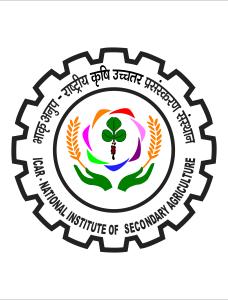
Institute Research Farm (IRF) of the Institute has been developed for research and demonstration purpose and acting as a field laboratory. The IRF is spread across 100 acres and presently possess has approx. 1550 host trees of Schleichera oleosa (Kusum), 2480 trees of Butea monosperma (palas), 1351 trees of Ziziphus mauritiana (ber) and 8700 other host plants. The IRF also maintains a nursery of lac host plants for meeting the demand from other institutions as well as the farmers. The Institute research farm has 33 plots of different host plants and is used for conducting various types of experiments. IRF has three water harvesting pond of size 50x30x5 m having capacity of 7500m3, size 45x30x5 m having capacity of 6200m3 and 116×34.5×5 m having capacity of 14007m3 respectively, which is the source of water to farm throughout the year. Besides this, the IRF has a B-class agro-meteorological observatory, Field Training- cum- small scale lac processing unit and a vermicomposting unit. The farm is well equipped with irrigation facilities, tractor and other implements.
The Institute farm is also engaged in collection and maintenance of germplasm of lac insect lines as well as lac host trees in the gene bank which has helped the Institute receive laurel by getting recognized as National Lac Insect Germplasm Centre (NATLIGEC) on November 29, 2009. A small Resin and Gum Plant Germplasm Farm has been also developed as collection cum exhibition of Gums and resins plants.
Lac insect germplasm
National Lac Insect Germplasm Centre (NATLIGEC) maintains lac insect collections from 18 states of India. 1050 cultures of 52 lac insect lines which include 12 cultivated, 15 natural populations, 18 cross bred/inbred/selected, one exotic and six uncoded lines are maintained live under net cage condition on potted plants of bhalia (Flemingia macrophylla) in the NATLIGEC located at Institute research farm. While some of the lines were recently collected, most of the lines been maintained for more than thirty generations.
Resin and Gum plants germplasm farm
The resin and gum tree germplasm farm has been developed in an area of about 3.1 acres in the institute by planting trees of resin and gum species collected from different parts of the country. The Germplasm farm of the Institute has more than 300 plants including various resin trees like chir pine, dikamali, white dammar, sal, rubber, etc., gum trees like karaya, dhawda, drumstick, neem, jhingan, bahera, piyar, asan, arabic gum, acacia, etc. and gum-resin trees like guggul and salai. The farm has display boards in every plot mentioning the botanical name, family and uses of these resin and gum species and is used for demonstration purpose to the trainees. This farm also has a rainwater harvesting pond.

